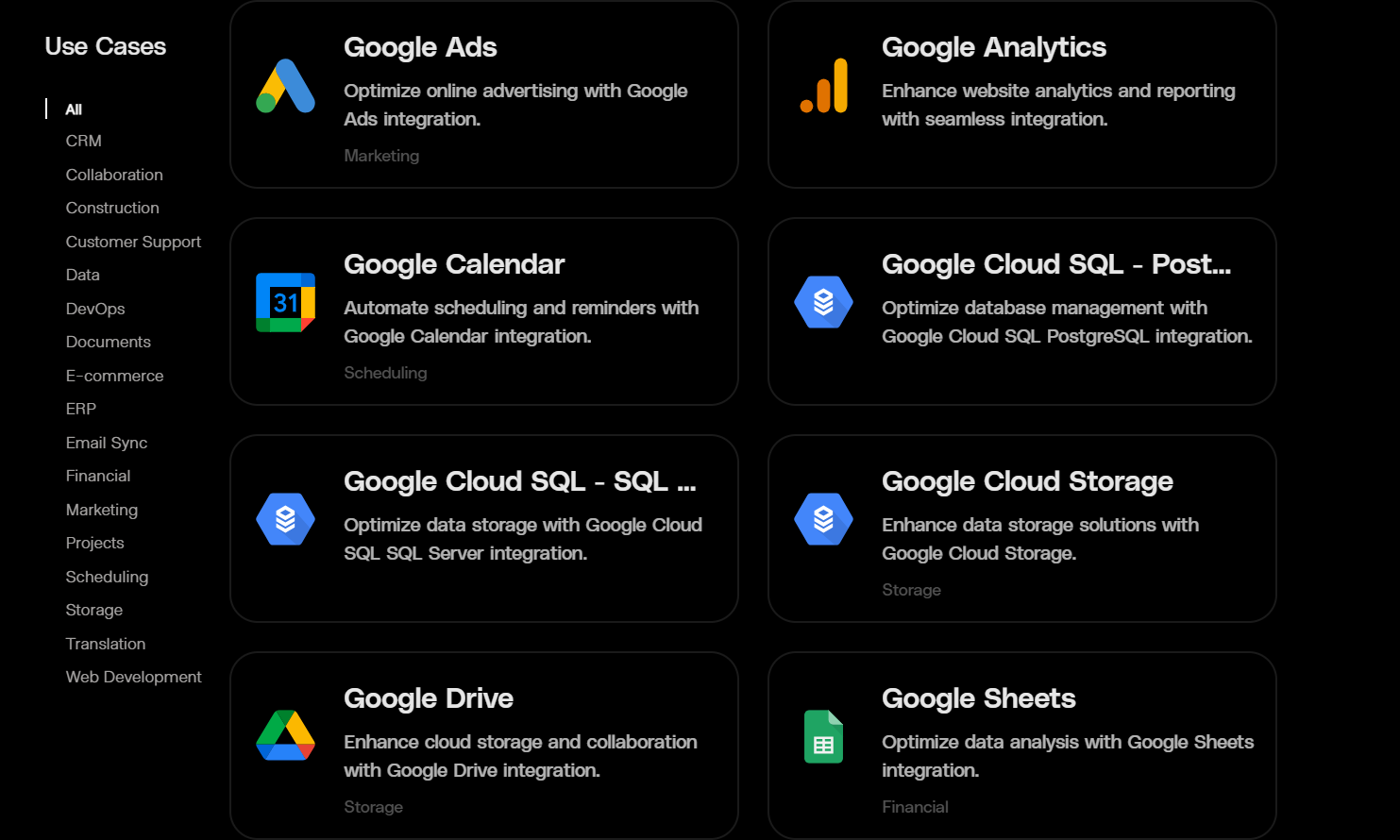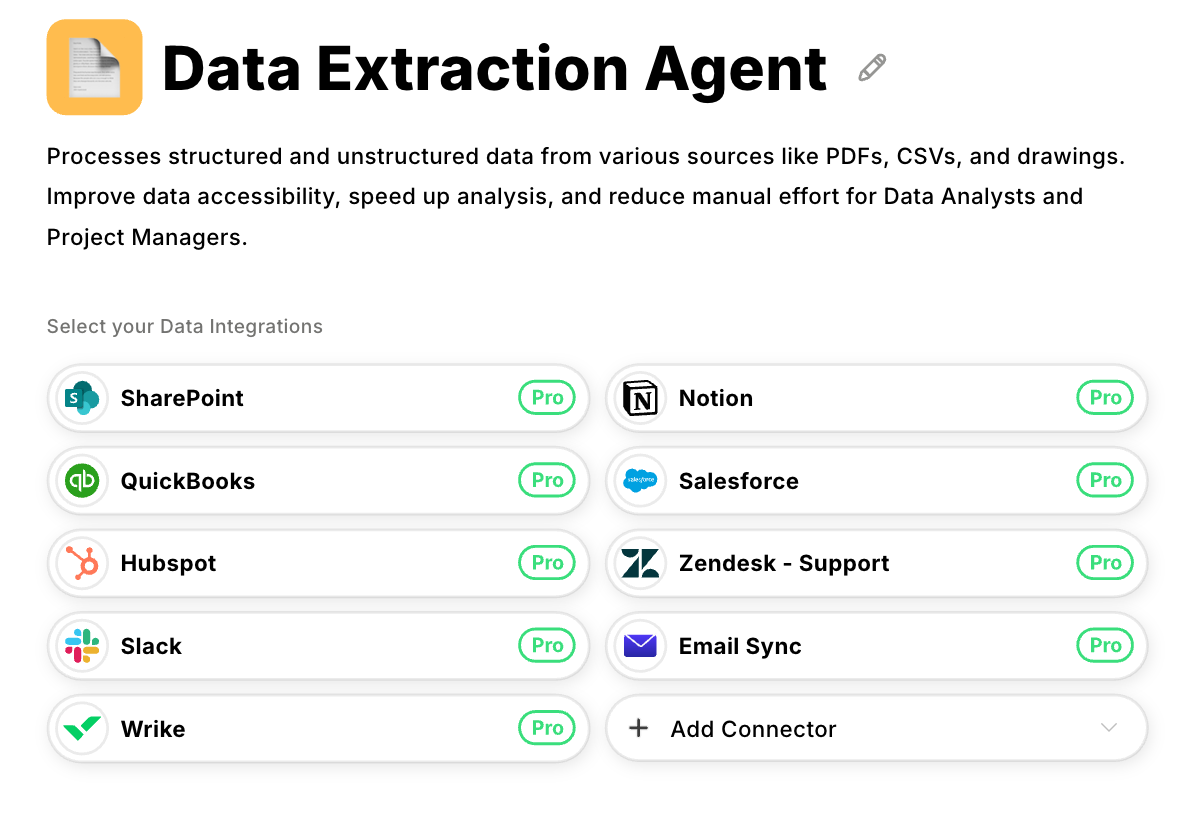The Complete Guide to Automating Your Document Review With AI Agents

Discover how AI agents revolutionize document review by enhancing efficiency, accuracy, and decision-making. Learn to automate with intelligent tools.
Imagine scrolling through a 90-page master service agreement at 8 p.m., hunting for an indemnity clause before tomorrow's filing deadline. Every extra hour and double-digit error rates creep in when fatigue sets in.
But there's a solution: learning how to use AI agents for document review.
The shift from manual review to automated agentic processing eliminates the sequential bottleneck, transforming how you manage information. AI agents automate the review process while you focus on exceptions and strategic decisions.
To use AI agents for document review in your business, here are the exact steps you need to apply today. Each step builds toward a repeatable, enterprise-grade review system that integrates with existing workflows.
Step #1: Zero-In on High-Impact Documents
Most businesses now process enormous volumes of documents daily—emails, chat archives, contracts, scanned forms—before making decisions. Manual review doesn't just slow teams down; it costs time and inflates legal spend by hundreds of billable hours annually.
Start with one specific document type where AI will deliver immediate ROI. Target areas where three factors intersect—high volume, high complexity, and high risk.
For instance, in a corporate legal department:
- NDAs that cross your desk weekly
- Master service agreements with nuanced liability clauses
- Insurance policies requiring compliance verification
- Loan applications that pile up quarterly
Multiply these factors (volume × complexity × risk) to calculate an impact score. This tells you exactly where AI pays for itself first.
Track baseline metrics before automating: average review time per document, error rate, and outside-counsel spending on late-stage fixes. Hard numbers show whether your pilot works within days, not months.
To identify your highest-impact candidate, consider these diagnostic questions:
- Does this document type appear daily or weekly?
- Does each review involve complex clauses or multiple data points?
- Does a missed error trigger fines, litigation, or costly rework?
Pilot one document set, perfect the workflow, then scale with confidence.
Step #2: Map Critical Review Criteria and Risk Flags
If every team uses a different playbook, even the smartest AI will struggle. You first need a single source of truth for what "good" looks like. Manual guidelines rarely survive contact with a deadline—paralegals and analysts improvise, error rates climb, and costly re-work follows.
Start by building a requirements matrix that spells out the clauses to extract and the language that should light up a red flag. For example, for most contracts in corporate legal practice, the core buckets are clear:
- Indemnification
- Limitation of liability
- Termination
- Confidentiality
- Governing law
- Payment terms
Under each, add objective data points—dates, parties, monetary caps—as well as subjective thresholds such as "any uncapped liability." Mapping these side-by-side lets an AI agent treat objective extraction and risk scoring as two related but distinct jobs.
Historical redlines provide valuable training data. Compare the edits that partners or compliance officers have made in the past and translate those patterns into explicit risk triggers. Teams that feed this context into annotation sets see the AI surface the same issues automatically.
With the matrix in place, involve legal and compliance SMEs to sanity-check edge cases—industry-specific indemnity carve-outs, jurisdictional quirks, or regulator-mandated disclosures.
Once approved, the matrix becomes training fuel. Document the downstream workflow just as rigorously. Define who signs off when the agent highlights a "high-risk" indemnity clause, how escalations are logged, and where exceptions live for audit purposes.
By codifying criteria, risk triggers, and approval paths upfront, you give the AI—and every reviewer who touches the file—a clear rulebook to follow.
Step #3: Choose the Right AI Agents
You don’t need to waste months evaluating AI platforms that can't handle multiple document types.
Legal teams need semantic analysis for contract language. Finance teams need OCR for scanned forms. Operations teams need table extraction from complex PDFs. The wrong choice costs months of implementation time and forces manual workarounds.
Two paths solve this: build your own system from open-source models. Building from scratch gives you control but requires data science expertise and ongoing maintenance.
Alternatively, you can deploy a platform like Datagrid that handles multi-model orchestration automatically. When choosing platforms for AI agents, three capabilities separate effective platforms from expensive disappointments:
- Data security comes first—enterprise deployments need private cloud options and guarantees that your documents never train vendor models.
- Integration depth ranks second—native connectors to SharePoint, Google Drive, and case management systems eliminate manual uploads that break adoption.
- Export control closes the evaluation—your extracted data must leave as clean JSON or CSV to prevent vendor lock-in.
Test every vendor with your actual documents before committing. Ask for training data transparency, detailed pricing tiers, and roadmap timelines for new model releases. Modern platforms like Datagrid provide faster deployment of AI agents.

The right platform eliminates infrastructure complexity so your team focuses on review strategy instead of technical troubleshooting.
Step #4: Feed Your Agent Quality Data
Document review agents fail when trained on incomplete or inconsistent data. For instance, legal teams can discover this reality when their AI misses critical indemnification clauses or flags standard boilerplate as high-risk violations.
The solution starts with building a comprehensive dataset that mirrors your actual document workload—contracts with complex carve-outs, scanned PDFs with varying quality, even handwritten amendments that somehow made it into your digital files.
Your dataset needs at least 10-15 examples of every major document variation the agent will encounter. This repetition teaches the model to generalize across different formats, clause wording, and document structures.
Start by gathering representative documents across departments and jurisdictions, ensuring coverage of your most complex scenarios rather than just clean, templated agreements.
Data preparation follows a systematic approach that preserves document integrity while protecting sensitive information. Anonymize personally identifiable information while maintaining the original layout, spacing, and pagination—the agent needs to "see" how clauses appear in context within actual document structures.
Label key clauses and risk flags consistently across your entire dataset, then double-review a subset to catch annotation drift that undermines training quality.
Finally, create a separate validation set that remains hidden during training. Run precision versus recall tests on a ten-document sample to identify blind spots before production deployment.
When reviewing the model's low-confidence predictions before deployment, focus on systemic labeling errors rather than prompt adjustments—quality training data produces quality extraction results, eliminating those midnight searches through contract archives for missed termination clauses.
Step #5: Integrate AI Agents Into Existing Workflows
Your team already trusts Google Drive and SharePoint for document storage—you don't need to rebuild that foundation to automate review workflows.
Modern platforms like Datagrid ship pre-built connectors that let AI agents process contracts the moment they hit shared folders, extracting clauses and assigning risk scores without anyone leaving their workspace.

With this, document processing flows naturally through connected systems: vendor uploads contract → agent extracts clauses and assigns risk score → you get Slack or Teams notification only if score crosses threshold → approved documents sync to your DMS or CRM automatically.
Conditional routing can send low-risk NDAs through fast approval, while complex agreements escalate directly to senior counsel. Every action generates audit trails automatically—compliance teams get real-time visibility without additional data entry.
Start with one approval hierarchy—paralegal reviews agent insights, attorney approves, GC signs off—so reviewers see AI analysis inside familiar tools. Teams get faster review cycles and fewer context switches in workflows that feel familiar but run dramatically quicker.
Step #6: Automate Extraction and Risk Detection
In legal environments, most teams spend the bulk of their time hunting through indemnity clauses, cross-checking liability language, and copy-pasting dates into spreadsheets. AI agents can eliminate this manual work by parsing every contract page the moment you upload a file.
For instance, a multi-agent pipeline can divide the processing into multiple batches:
- One agent handles OCR and layout analysis
- Another extracts entities and clauses
- A third applies your predefined risk rules
Contracts that previously required hour-long manual reviews now arrive in your queue with key terms highlighted in seconds, reducing total review time.

Semantic understanding beats simple keyword matching every time. AI agents spot custom or buried language—hidden auto-renewal clauses tucked inside exhibits, non-standard indemnification terms, unusual liability caps—that pattern matching misses completely.
When the AI misjudges something—tagging a routine confidentiality clause as high risk—you highlight the text and trigger "Re-train on Selection" to correct future predictions immediately. You can also set up weekly validation rules to compare extracted fields against mandatory checklists, flagging omissions before documents leave legal review.
The result: executives get concise, audience-specific summaries while you maintain structured audit trails ready for compliance inquiries.
Step #7: Validate, Iterate and Establish Feedback Loops
No AI system delivers perfect accuracy from day one, so build formal QA into your workflow immediately. Pull a statistically significant sample—5-10% of weekly reviewed documents works for most teams—and run them through human reviewers.
Track findings in a precision/recall dashboard; tools like Google's evaluation module surface F1, false-positive, and false-negative rates in real time, letting you catch accuracy drift before it impacts business decisions.
Match your oversight intensity to document risk levels. For instance, in a legal environment, low-stakes NDAs might need only 5% spot checks, while high-exposure MSA negotiations should maintain 100% human sign-off.
Document every error systematically. Log misclassifications by category—extraction miss, incorrect risk flag, format failure—in a shared registry. Weekly error analysis can reveal where to expand training data or adjust prompts, following best-practice approaches.
As a last process, establish governance around model improvements. Version each iteration, require cross-functional approval before deployment, and keep rollback procedures ready. When legal, compliance, and operations teams review the same performance metrics, you create accountability that keeps agents learning while reducing organizational risk.
Step #8: Measure Success and Scale Across Teams
Lasting support for AI agents comes from numbers, not promises. Frame your baseline first: average review time per document, outside-counsel spend, and error rates in your current process.
Capture the same metrics after deployment so stakeholders see real improvement instead of theoretical benefits.
The core KPIs are straightforward: cycle-time reduction, precision/recall, and cost per document. A weekly dashboard tracking accuracy (F1 scores), latency, and throughput following Google's gen-AI KPI playbook can keep performance transparent.
However, business outcomes matter more than technical metrics. Publish quick-win case studies internally. "Contract audits now close 70% faster" connects the metric to a real document set. Circulating these stories builds momentum and surfaces new automation candidates.
Formalize a center of excellence once you have proven results. Give it ownership of metric definitions, model updates, and phased rollout schedules—high-volume, low-risk documents first, then expand to regulated teams once precision exceeds 95%.
Use this formula to keep finance engaged: ROI = (baseline cost – AI cost) ÷ AI cost. When the ratio consistently tops 2:1, budget conversations become much easier.
Automate Your Document Review with Agentic AI
While this eight-step framework delivers comprehensive results, you need faster deployment for immediate document processing relief. Don't let fragmented data sources slow down your team.
Datagrid's AI-powered platform, featuring advanced data connectors, is designed for professionals who want to automate tedious tasks and streamline data management. With powerful data connectors, you can integrate various data sources effortlessly.
Create a free Datagrid account to get started and simplify your data integration—experience the difference AI data connectors can make.

